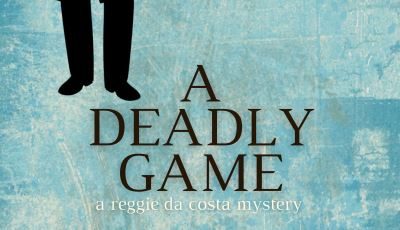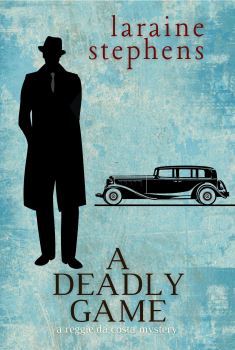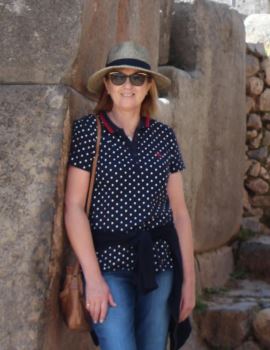

Historical Thrillers A Deadly Game by Laraine Stephens
A secret life exposed, Melbourne, 1925. Reggie da Costa, The Argus’s celebrated crime reporter, takes a break from investigating gangland crime to assist Ruby Rhodes, whose identical twin sister has died in mysterious circumstances. Together, they investigate how Katherine could afford a house, motorcar, expensive jewelry, and a wardrobe of the latest fashions on the wages of a museum assistant. With Reggie’s assistance and protection, Ruby assumes her sister’s identity and infiltrates the illegal gambling dens and risqué social clubs of 1920s Melbourne to uncover the truth.
The Big Thrill caught up with author Laraine Stephens to learn more about the latest book in her A Reggie da Costa Mystery, A DEADLY GAME:
Can you pinpoint a moment or incident that sparked the idea for this book?
I thought: what if you had an identical twin sister that you’d been estranged from for years and you discovered that she’d led a double/secret life?
A novel is such a major undertaking; there’s the writing of it, of course, then you’re spending months and months revising, polishing, and then promoting it. How did you know this was the book you wanted to spend the next couple of years on?
It not only has a crime which must be solved but presents a very strong character arc for the protagonist. Psychologically it was an interesting concept: that a woman would take on the identity of her identical twin sister to find her killer and, at the same time, undergo a positive change to her personality.
Were there any particular books, movies, or songs that were knocking around in your head while you were writing this one?
Kerry Greenwood’s Phrynne Fisher series of books and films depicts Melbourne in the 1920s: the emphasis on cars, fashion, flappers, and gangsters, as well as the slums and poverty of the time. I also channeled Fergus Hume’s Mystery of a Hansom Cab with its drug dens and grinding poverty from the 1880s.
When you first created your protagonist for this book, did you see an empty space in crime lit that you wanted to fill? What can you share about the inspiration for that character?
I wanted to make my depiction of Melbourne in the 1920s take in the fads and fancies of the time: the obsession with the discovery of Tutankhamun’s tomb and Egyptian antiquities and decoration; the ballrooms and the dances (the Charleston); the clothes and the automobiles. I wanted to make the setting and background authentic and accurate.
In addition to a great read, what do you hope readers will take away from this story?
I want my readers to feel the 1920s and to understand what society was like at the time. There was the place of women, who were limited in what they could do and the expectations that society placed on them, the emergence of the use of cocaine after it was used during the Great War by soldiers who brought their drug habit back, and the polarisation of society into the haves and have-nots. Also, illegal gambling and alcohol and gang crime found its way into the back streets of Melbourne.
What can you share about what you’re working on next?
I’m having a ball researching the scam artists and conmen and women of the 1920s: the snake oil salesmen, the outlandish claims made for medicines that contained alcohol, opium, and morphine and the medical apparatus that could heal diseases and medical conditions but didn’t!
Laraine Stephens lives in Beaumaris, a bayside suburb of Melbourne, Australia. With an Arts degree from the University of Melbourne, a Diploma of Education and a Graduate Diploma in Librarianship, she worked in secondary schools as a Head of Library. On retirement, Laraine turned her hand to the craft of crime writing.
To learn more about the author and her work, please visit her website.
- LAST GIRL MISSING with K.L. Murphy - July 25, 2024
- CHILD OF DUST with Yigal Zur - July 25, 2024
- THE RAVENWOOD CONSPIRACY with Michael Siverling - July 19, 2024


